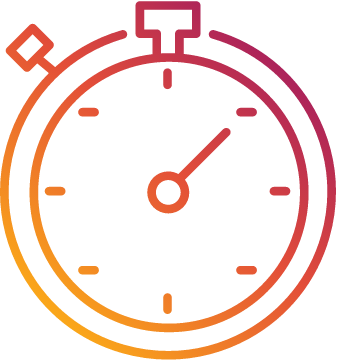De-escalation is a powerful tool that can help calm patients safely and cooperatively1,2
The benefits of de-escalation are far reaching for patients and staff1,2
overall safety
of patient
cooperation
of coercion
efficiencies
healthcare resource
utilization
Cooperative de-escalation involves a multifaceted approach that should be tailored to each patient2,3
The goal is to mitigate the risk of harm to oneself and others while providing symptomatic relief that allows the patient to participate in their care.2
Based on established guidelines, gaining patient cooperation requires a T.E.A.M. approach to de-escalation.2,3*
Download the De-escalation Strategy Guide
A useful resource summarizing how to implement a cooperative de‑escalation strategy in your practice with a T.E.A.M. approach.*
*Project BETA (Best Practices in Evaluation and Treatment of Agitation) guidelines developed by the AAEP (American Association for Emergency Psychiatry).2,3
Pharmacological interventions should be used to complement de-escalation techniques
Guidelines recommend that if pharmacological intervention is necessary1,3:
- The patient should be involved in medication selection
- It should be offered in a comforting manner, for instance, in conjunction with offering food, juice, or a quiet, peaceful room, to help facilitate cooperation
- Medications should be used to calm patients, not induce sleep
- Oral medication is preferred over intramuscular if the patient can cooperate

DE-ESCALATION CAN BE SUCCESSFUL IN
LESS THAN 5 MINUTES,
which can enable patients to cooperatively take a noninvasive medication 2
Prompt identification and cooperative de-escalation is an effective approach to prevent further escalation of agitation in patients.2,4
HEAR Expert
Perspectives ON COOPERATIVE
DE‑ESCALATION
*Dr. Zeller and Dr. Zun are acting on behalf of and are supported by BioXcel Therapeutics, Inc.
References:
1. Roppolo LP, Morris DW, Khan F, et al. Improving the management of acutely agitated patients in the emergency department through implementation of Project BETA (Best Practices in the Evaluation and Treatment of Agitation). JACEP Open. 2020;1(5):898-907. doi:10.1002/emp2.12138 2. Richmond JS, Berlin JS, Fishkind AB, et al. Verbal de-escalation of the agitated patient: consensus statement of the American Association for Emergency Psychiatry Project BETA De-escalation Workgroup. West J Emerg Med. 2012;13(1):17-25. doi:10.5811/westjem.2011.9.6864 3. Wilson MP, Pepper D, Currier GW, Holloman GH, Feifel D. The psychopharmacology of agitation: consensus statement of the American Association for Emergency Psychiatry Project BETA Psychopharmacology Workgroup. West J Emerg Med. 2012;13(1):26-34. doi:10.5811/westjem.2011.9.6866 4. Martinez-Raga J, Amore M, Di Sciascio G, et al. 1st international experts’ meeting on agitation: conclusions regarding the current and ideal management paradigm of agitation. Front Psychiatry. 2018;9:54. doi:10.3389/fpsyt.2018.00054




